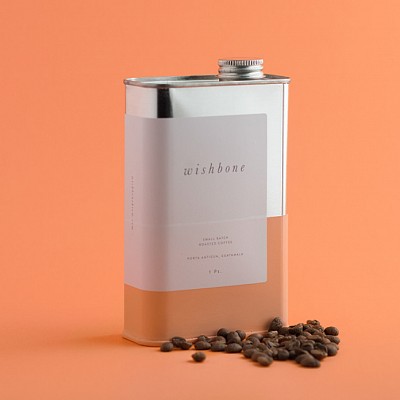Did you know that goats might have been the first animals to taste coffee berries? That is what an Ethiopian legend says.
Although it is not clear which country started growing coffee first, there are so many countries today that produce quality coffee beans. We all enjoy coffee almost every day. Studies show that consuming coffee can help reduce the risk of Parkinson disease and type II diabetes. This is why we need a cup of quality coffee every day.
Besides the health benefits, some of us take coffee as an experiential activity. But where does this quality coffee come from?
Coffee Origins
Coffee may have first grown in Ethiopia in 700 A.D. A herder known as Kaldi, as legend says, saw that his goats were dancing after eating the berries of a certain tree growing in the forest. He told a monk what he had observed and the monk would take the berries to help him stay up at night.
There is also another version of the legend that says the monk wanted nothing to do with the berries and so he threw them into a fire. The berries gave a very pleasant aroma and this made the first roasted coffee berries.
From Ethiopia, the berries moved to Asia, then Europe, and finally to America and other parts of the world. It replaced wine and beer as a breakfast drink in Europe.
Ethiopia
Ethiopia is the largest coffee producer in Africa. The coffee from Ethiopia, known as Harrar coffee, grows in the highlands in East Ethiopia. The high altitude in the area gives the best climate for the growth of coffee.
The coffee has a wine taste with some astringency. It may also give a spicy and fruity flavor, depending on the climate during the time of growth. The Harrar coffee is a product of peasant farmers in the Eastern part of the country.
Jamaica
Jamaican coffee is the most expensive. A James Bond movie referred to the coffee as elite standard. The coffee gives a classic flavor, which may be what makes it an expensive batch.
When roasted, the coffee has the aroma of rum and the Jamaicans refine the coffee so much to make it special. It may also give off a smooth and mellow flavor.
The country highly regulates their coffee exports, and this makes an ounce of coffee cost more than $3.
Kenya
The Kenyan highlands in the central parts of the country provide the best climate for the growth of coffee. Farmers in Kenya source for the highest quality coffee beans as these ones sell more.
To encourage the farmers to grow the best beans, the government auctions the beans when they are ready. This way, the best quality beans go to the highest bidders. Farmers, therefore, take good care of their beans to ensure they are the best.
The coffee from Kenya has sweet fruity taste and a syrup-like body. Its aroma is that of fruits and flowers.
Sumatra
Sumatran coffee grows in Indonesia. It is one of the finest premium coffees in the world. The coffee has an earthy flavor with low acidity. Its body is full and people describe it as syrupy.
With Sumatran coffee, lovers of coffee will enjoy the jungle essence of the Sumatra Island in Indonesia. The coffee grows at altitudes between 2,500 and 5,000 meters above sea level. This gives the best climate for the growth of Arabica coffee, which has a sweeter and smoother taste than other varieties.
When brewed, the coffee gives a creamy and sweet taste with an aroma of spices and butterscotch.
Brazil
Brazil is the largest producer of coffee in the world today. The coffee grows in the country’s southeastern states where plantations cover more than 10,000 square miles.
The huge volumes of coffee that the country produces mean they produce all strains of coffee. They have low grade Arabica and the highest grade of coffee from their plantations. The high altitude, the soil, and climate of the area gives Brazil the power to produce highest quality coffee.
Coffee from Brazil has a clear and sweet taste with a medium body and low acidity.
Columbia
Columbia produces about 15 percent of all the world’s coffee. They have the best quality Arabica, which is a favorite of many coffee aficionados throughout the world.
Coffee from Columbia is in three qualities; Excelso, Extra, and Supremo. Supremo is top quality coffee processed with the latest technology. The coffee is available in large smooth grains. Its velvety aroma and the rich flavor make Supremo a favorite of many people. But Supremo coffee is not easy to come by.
Extra grade is just inferior to Supremo, but it also gives a strong and energizing taste. Excelso blends Extra and Supremo to create a flavor that is acidic and has the aftertaste of wine.
Guatemala
Guatemala grows their coffee in the mountains. The coffee develops a rich and intense tart flavor that makes it sweet. Coffee from this region has the name “Antigua Volcanic” to indicate the highest quality. This coffee variety gives a strong and refined aroma with some hints of smoke.
The coffee comes in contact with the ocean winds that give the coffee a bright flavor with some acidic tines.
Besides Antigua, there are six other regions that produce coffee in the country. The coffee from each of these regions has a different taste. Generally, the coffee has a rich taste with a medium to full body. It may also give notes of chocolate.
Final Thoughts
There are many more countries that produce quality coffee beans. These seven are among the top coffee producing countries.
There are different factors and standards of grading coffee such as cupping scores, green coffee standards, and cupping standards. Away from these standards, you will know quality beans by their taste, aroma, and freshness. You will experience floral notes or a nutty, fruity, or earthy aftertaste in a cup of good quality coffee.
If the bitterness of the coffee is pleasant and not sharp, then you know you have a cup of high quality coffee.






































